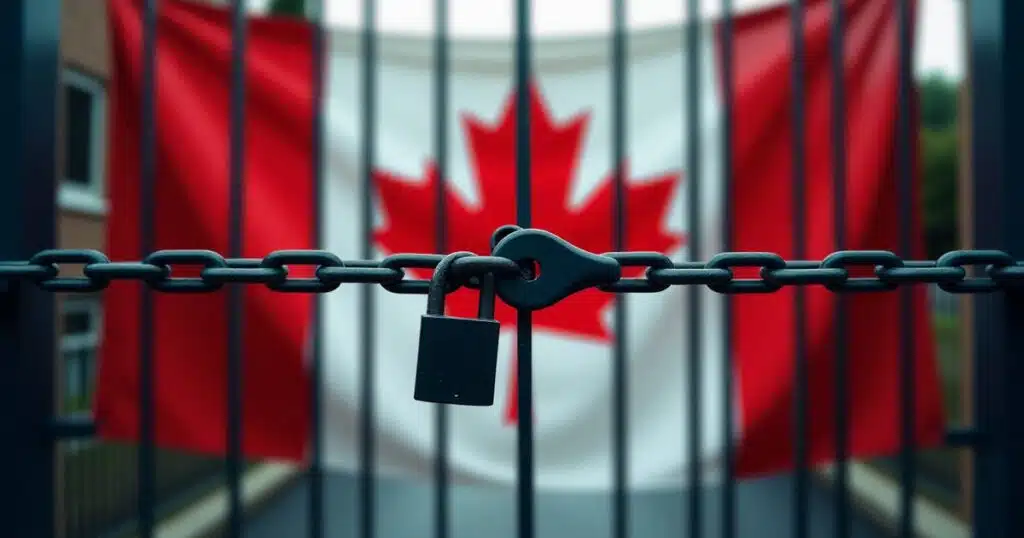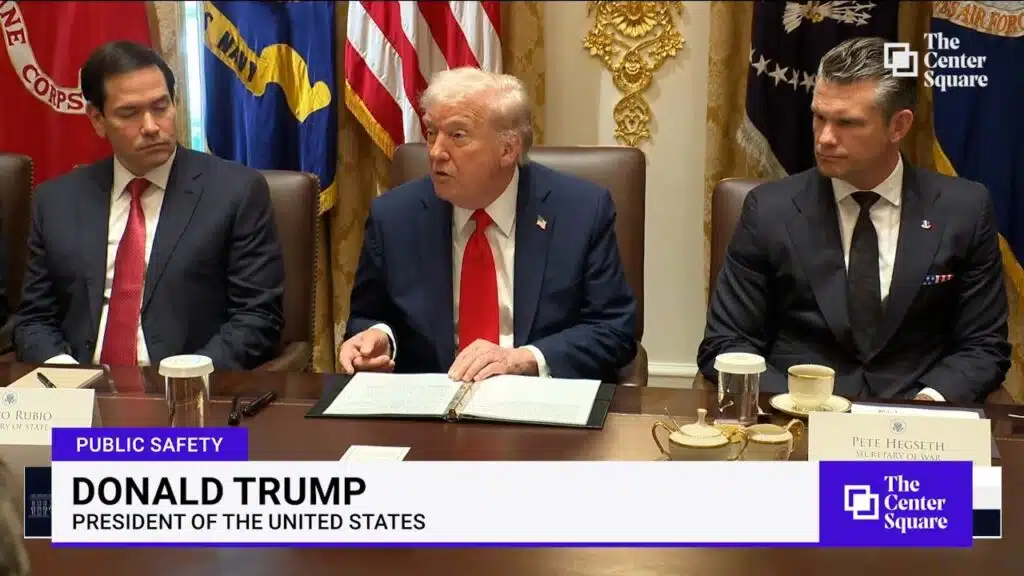
Canada Is Aggressively Attacking U.S. Trade, Farmers and Workers
Canada has one of the most protectionist economies among developed nations. It particularly targets American farmers, media, and manufacturers. That may be why Donald Trump launched his counterattack on trade offenders with a 25% tariff on many imports from Canada and Mexico, and 10% on Canadian energy.
Unhelpfully, Trump claimed authority to do so under the International Emergency Economic Powers Act because of an “extraordinary threat” posed by “unchecked drug trafficking.” The White House failed to explain how this applied to Canada. And, while his goals are entirely correct, his April 2 “Liberation Day” global strike, imposing 10% baseline tariffs on almost all nations, and so-called reciprocal tariffs on friends and foes alike, roiled markets and aligned the world against us. That’s why Trump rapidly retreated, suspending reciprocal tariffs, except for China.
Clever countries are waging trade war on us. Despite this, America has the world’s strongest economy. Except where there are national security considerations that mandate pulling our punches, the U.S. can win every time – if we play chess, not Rock ‘Em Sock ‘Em Robots. When it comes to using tariffs as a weapon, Trump should focus on two or three targets at a time, take them down, and then move on to the next. I nominate China, the European Union (see here) and Canada.
Canada is our largest individual export market, and while it may not be a threat to American health, it is an adept abuser of free trade. According to the U.S. Census Bureau, exports of goods to Canada in 2024 were about $350 billion, and imports about $413 billion, for a deficit of $63 billion, though U.S. services reduce the deficit by about $10 billion. In January, the goods deficit grew to an annualized rate exceeding $140 billion.
When Trump met with Canadian prime minister Mark Carney a few weeks ago, he avoided the undignified trolling to which he had subjected Justin Trudeau, and observed that “I think things will work out very well between Canada and the United States.” Still, Trump singled out Canada on Liberation Day, criticizing its tariffs on agriculture, and claiming that the U.S. subsidizes our neighbor by almost $200 billion a year. Nonetheless, Trump imposed no additional tariffs on Canada.
Canada will shroud itself in this miasma and continue to play the victim. It’s an act. Canada takes care of Canada.
While Canada’s businesses and citizens benefit from almost unfettered access to the United States, it limits our access through “made-in-Canada” requirements, standards that generally can be met only by natural resources in Canada, and financial support available only to Canadians. Even its offer last week to rescind tariffs on U.S. automakers was conditioned on further investment in Canada. Canada looks out for Canada.
One of the most enduring trade disputes involves subsidies Canada provides to its softwood lumber industry. Last year, the Biden administration raised tariffs on imports of Canadian softwood lumber from 8.05% to 14.54%.
Recently, Canada banned most foreigners from purchasing Canadian residential property. Numerous provinces also impose additional property taxes on foreign property owners.
The U.S. Trade Representative’s report on Foreign Trade Barriers and the International Trade Administration website cite numerous obstacles imposed by Canada, including:
- The Investment Canada Act has regulated foreign investment in Canada since 1985. National security and a more nebulous standard of “economic net benefits” for Canada is a determining factor in reviews of foreign investments. Canada also restricts foreign ownership and board positions in many industries.
- In 2024, Canada began taxing online sales, advertising, and social media, singling out S. companies for taxation while effectively excluding Canadian firms in similar businesses. The tax is retroactive to 2022.
- Canada’s regulation of the dairy, chicken, turkey, and egg industries “severely limits” S. imports. Canada also limits U.S. imports of seeds, cheese, fresh fruits, vegetables, and electricity.
- Most Canadian provinces “greatly hamper” U.S. imports of wine, beer, and spirits.
- More than 50% of TV channels, and at least 35% of popular music broadcast on radio, must be Canadian, and the “needs and interests” of Canadians must be prioritized in video, music, and digital media.
- Canadian cable and satellite suppliers rebroadcast U.S. border stations without consent, while denying tax deductions to Canadian businesses that advertise on these stations.
Canada also offers tax credits, loans, and subsidies to companies and projects owned by and hiring Canadians. For example, subsidies for film and television production utilizing Canadian directors, writers, and actors have allowed Vancouver and Toronto to challenge Los Angeles and New York, and pull ahead of Atlanta, while providing Canadian actors life-long advantages.
By contrast, the U.S. has long been hospitable to Canadian investment, goods, and people. Canadian headquartered or owned businesses that are well known in the U.S. include Burger King, Lululemon, Canada Goose, TD Bank, MAC Cosmetics (until being sold), Saks Fifth Avenue (spun off in 2024), Shopify, Rumble, and Pornhub. The Wikipedia list of prominent Canadian-Americans is 35 pages. Most spent their lives in the United States, which accorded them the economic opportunities available to all Americans.
Canada’s trade barriers reduce our GDP by less than 1% but boost Canada’s economy by considerably more. The challenge is to work with Canada to eliminate its barriers over a period that won’t rock the Canadian economy. But if that effort hits a wall, the administration would be obligated to protect Americans by rolling out properly computed and targeted reciprocal tariffs and non-tariff measures.
Canada may be able to beat the U.S. in hockey, but despite its bellicose tone, it can’t win a well-fought trade war.
This article was originally published by RealClearPolitics and made available via RealClearWire.


